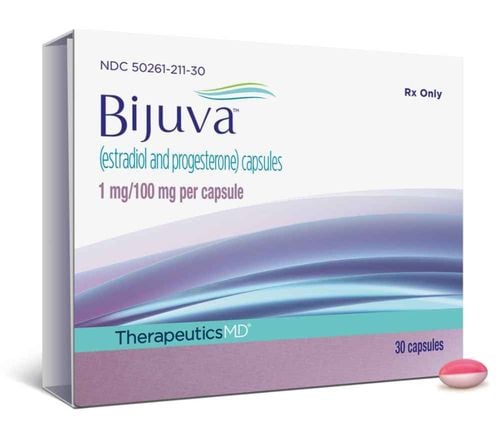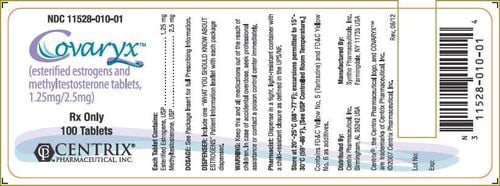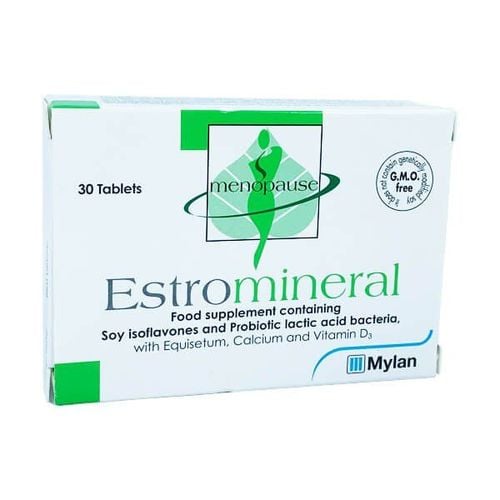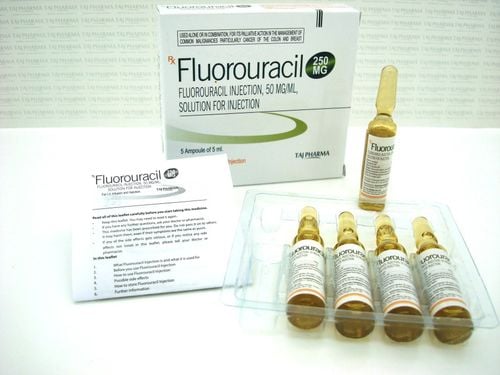This is an automatically translated article.
Toremifene is a prescription medicine for certain medical conditions. So what is Toremifene used for and how is it used?
1. What is Toremifene for?
Toremifene belongs to a class of drugs called selective estrogen receptor modulators, or SERMs. Most breast cancers require a supply of estrogen (a female hormone produced by the body) to grow.
Toremifene reduces the risk of developing invasive breast cancer by blocking the effects of estrogen on breast tissue. This can stop the growth of tumors that need estrogen to grow.
2. How to take Toremifene
Toremifene comes as a tablet to be taken by mouth at the same time each day, with or without food. Toremifene can affect the levels of certain substances in your blood, so you'll have frequent tests to monitor these levels.
It is important to make sure that you are taking the correct amount of Toremifene each time. Before each dose of Toremifene, check that what you are taking matches what has been prescribed.
Toremifene blood levels can be affected by certain foods and medications, so they should be avoided, including: Grapefruit, grapefruit juice, verapamil, ketoconazole, rifampin, phenytoin, St. John's wort and modafinil. Be sure to tell your doctor\ about all medications and supplements you are taking.
Women should use a non-hormonal method of birth control such as condoms, sponges, and diaphragms while taking Toremifene.
3. How to store and handle Toremifene
Store Toremifene at room temperature in its original container. If you prefer to use a pill container, discuss this with your oncologist.
Ask your doctor where to return any unused medicine for disposal. Do not flush Toremifene down the toilet or throw it in the trash.
4. Possible side effects of Toremifene
The most common or important side effects of Toremifene include:
Heart problems: Toremifene can cause a slow or irregular heartbeat called QT prolongation. Tell your doctor right away if you feel an irregular heartbeat or if you feel dizzy or faint. Hot flashes and sweats: There are several things you can do to help reduce hot flashes and sweating. Several medications have been shown to help with hot flashes, including clonidine (a blood pressure medication), low doses of certain antidepressants (such as venlafaxine, fluoxetine), and gabapentin. Talk to your doctor about these prescription products to determine if they are right for you. Non-medical recommendations in this case include:
Stay hydrated with eight glasses of water daily. Drink ice or apply ice at the onset of a hot flash. Wear lightweight, breathable cotton or fabric clothing and wear layers so you can adjust as needed. Exercise on a regular basis. Try meditation or relaxation exercises to manage stress, which can trigger hot flashes and sweats. Avoid triggers such as warm rooms, spicy foods, caffeinated beverages, and alcohol. Less common but important side effects of Toremifene include:
Secondary cancer: A secondary cancer is a disease that develops as a result of treatment for another cancer. This is quite rare, but you should take this risk. In most cases, the secondary cancer associated with chemotherapy is a blood cancer (leukemia, lymphoma). This condition can occur many years after treatment. This usually involves repeated treatment or high doses of the drug Toremifene. Your doctor will monitor your tests closely. Consider getting a full blood count every year if you are receiving treatments with a high risk of secondary cancer. Bone Metastasis: Patients with cancer that has spread to the bone may experience pain or discomfort at the tumor site after starting toremifene, but this should subside over time and should be controlled with pain medication. . In addition, patients with bone metastases may develop hypercalcemia and require hospitalization to correct this. Symptoms of hypercalcemia include increased thirst and urination, nausea, constipation, muscle weakness, confusion, or altered mental status. If you experience any of these symptoms, tell your doctor right away. Blood clots ; Toremifene increases the risk of blood clots forming, which usually appear in the calf and can travel from there to the lungs. Women are at higher risk of developing blood clots, especially those with a family history of blood clots, heavy smokers, people with a sedentary lifestyle, older women, and have other predisposing medical problems. Women with any one of these risk factors may want to consider another therapy that does not have the side effects of increasing the risk of blood clots. Immobilization increases the risk of blood clots. You should stop taking Toremifene 3 days before and during prolonged immobility (hospital or bed rest).
Other side effects of Toremifene include: Headache, swelling of the hands or feet, dizziness, weight gain, vaginal discharge, and insomnia. Mood swings or depression may occur. Please talk to your doctor if you feel that you are having trouble with these side effects.
5. Effects of Toremifene on sex and reproduction
Women may experience menopausal effects including hot flashes and vaginal dryness. In addition, sex drive may decrease during treatment with Toremifene.
Exposure of the fetus to Toremifene can cause birth defects, so it is not recommended to become pregnant while using this medicine. Effective birth control is essential during treatment with Toremifene even if your period has stopped. You should consult your doctor before breast-feeding while taking Toremifene.
All information about the drug Toremifene, hopefully will help you know how to use the drug reasonably, safely and ensure good health for the patient.
Please dial HOTLINE for more information or register for an appointment HERE. Download MyVinmec app to make appointments faster and to manage your bookings easily.













